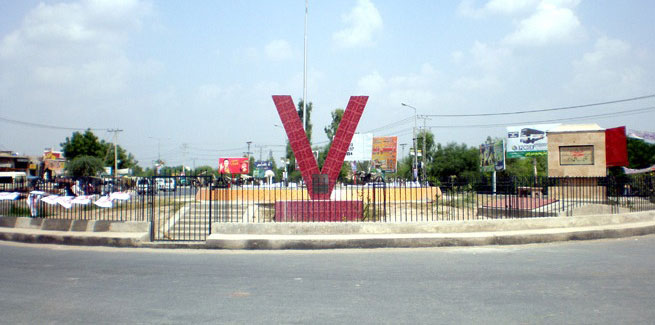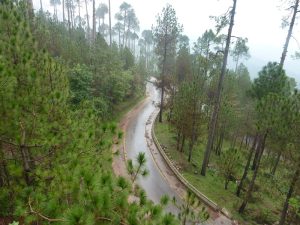Vehari town is the headquarters of the Vehari district in the lower region of the Punjab province. It is located about a 100 km away from the famous city of Multan. Its location is historically centered as it is located on the famous Multan Delhi road that was built by the famous emperor Sher Shah Suri. Some geographical facts about this area include its location’s altitude which is about 446 ft and its location about 37 km north of the river Sutlej. Located at about a 20 minutes drive from Vehari is the Islam Headworks which is basically a barrage that provides water for irrigation purposes.
was built by the famous emperor Sher Shah Suri. Some geographical facts about this area include its location’s altitude which is about 446 ft and its location about 37 km north of the river Sutlej. Located at about a 20 minutes drive from Vehari is the Islam Headworks which is basically a barrage that provides water for irrigation purposes.
The route to Vehari goes through Lahore and via the religious city of Pakpattan which is famous as the burial site of the well-known Sufi, Fariduddin Ganjshakar is buried. Sahiwal is also located enroute Vehari. Unfortunately, most if the roads that lead to Vehari are nor well maintained and the approach to this small town is extremely difficult. Also mentionable here is that Vehari does not fall on the route of some major transportation companies that have buses moving to and fro many different areas of the country. Since many of the major bus companies do not provide facilities in Vehari, reaching this city is often extremely difficult and the only viable solution re public buses in dilapidated conditions which are extremely difficult to travel in.
Its economy is majorly reliant on agriculture and almost everyone living in this town is either directly or in some indirect manner involved in some form of agriculture. Vehari is famously known as the city of cotton, amongst several other crops. This small town is commonly referred to as the king of cotton. Vehari is home to several cotton processing factories as well as oil manufacturing plants that produce oil from cotton seeds. Sugarcane is also a common farming product of the Vehari region and its processing is also common in the region. Some other agricultural products of the Vehari region include mangoes in the summer season and citrus and guava fruits in the winter. In fact, mangoes in this region are so popular that they often serve as gift purposes whenever residents of the area travel to other parts of the country.
An extremely important thing that comes to mind is the fact that Vehari has extremely hot summers. Although this city experiences all the four major seasons of the country: a cool and mostly dry winter from the months of December through February; a hot and dry spring starting in March and lasting through May; the summer is a rainy season especially in the monsoon period that starts in June and last till September; in October and November, the weather is moderate, hot during the day and pleasant at night. The exact timing of these climates can vary. However, the fact that stands out is that summer is one of the hottest season with extremely high temperatures. What however is more important is the fact that Vehari’s weather is extremely suitable for its agricultural produce.
Most of the Vehari population are either villagers or farmers and prefer to eat coarse food that is produced in their own farms. Butter and Lassi are important part of each meal and ‘Saag’ is a very popular dish.
As already mentioned, the population of Vehari is extremely small especially compared to other cities. Its total area equals just 1,688 square miles.
The rural crafts of the region include cotton textiles, basketry and intricate embroideries while the crafts produced by urban centers include silver and gold work, silver, naqqashi, some architectural crafts, as well as elaborate wood work designs managed by an extremely skilled workforce. Khaddar is a hand woven cotton cloth that Vehari extremely famous for. Most of the cloth that is handwoven is either beautified by block printing or elaborate embroideries. Embroidered shirts as well as bed covers are well known products of the Vehari town.
All the above mentioned fact about this region can perhaps be found anywhere. What is interesting is that Vehari is referred to as a city but it is extremely hard to identify whether it’s a rural town or an urban one. Proof of both exists in abundance. The construction, the facilities that are available present proof that this town is quite similar to other urban parts of the country. The new fashions in clothing and cars, all the new emerging trends in technology, even the upcoming lawn brands are abundantly available easily telling a naïve eye that this town is not so different after all. But then there is evidence that proves quite the opposite. Despite a lot of construction and emerging housing societies, facilities like clinics and hospitals, and huge developed markets for shopping there is still a huge population of the town that lives in mud houses. Children’s contribution in fields is more common than their attendance is schools. Surprisingly, despite a lot of auto traffic, the main mode of travel are still horse carts and now more recently ‘qingqis’. There has been recent increase in the number of primary schools and the famous ‘City School’ has now branched out to Vehari region but the major form of schooling available is the madrassas. Also, there are no institutions for higher education in the town of Vehari and its residents have to travel for gaining higher education.
Despite these many contrasts, it can be definitively said that Vehari is a conservative town. Seldom if ever will a woman be seen without a head scarf and in most cases a hijab. It is not a bad thing at all, but from what I can deduce from observation, the overall culture is such women are promoted as being sub servient to men. Perhaps this statement is too harsh but the dynamics of the society are such that men are considered way more powerful. The reason behind this is perhaps the low literacy rate.
The city might have many limitations but what needs to be appreciated is how closely knit this community is. Seldom do you come across people who do not know each other. These people are extremely hospitable and what is nice to observe is that they are proud of their heritage. Though this area is quite mall and does not actually have a very distinct culture, people have proudly kept alive the true spirit if the original town of Vehari. They appreciate every little development in this area and perhaps I’ve never seen town people more proud of their high achievers as the people of Vehari are. Despite being an extremely small dot on the map of the country, the people of Vehari are a proud and important part of the country.
